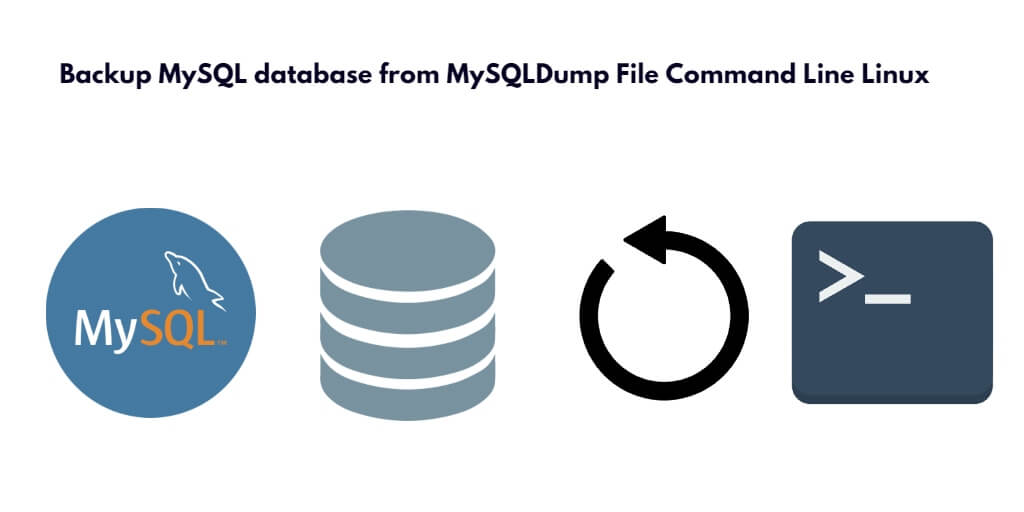To backup your MySQL database from mysqldump file, Simply type the MySQL command mysqldump -u [username] –p[password] [database_name] > [dump_file.sql] on the Linux Ubuntu command line and press enter, and it will take database backup and store dump file into your specified location.
How to Take Backup of MySQL database from mysqlDump File in Linux Ubuntu Command Line
Here are some steps to take backup of MySQL database using mysqldump file via terminal on Linux Ubuntu Server:
Step 1: Log in to your MySQL server
To login into the MySQL server, Simply type mysql -u root -p command on the command line or prompt, and press enter:
mysql -u root -p
Step 2: Select the database
After login to MySQL server, you need to select db which you want to backup, for this, you can use use my_database; command on command line:
use my_database;
Replace ‘my_database‘ with the name you want to give your database.
Step 3: Backup a MySQL Database Using mysqldump via Command Line
To backup MySQL database using mysqldump, Just type the mysqldump -u [username] –p[password] [database_name] > [dump_file.sql] on Linux Ubuntu command line, which you can use like this:
mysqldump -u [username] –p[password] [database_name] > [dump_file.sql]
Where:
mysqldump: Command-line utility in MySQL used for exporting databases or specific tables.-u [username]: Specifies the MySQL user for authentication.–p[password]: Indicates the password for the specified user. There should be no space between-pand the password.[database_name]: Specifies the name of the MySQL database to be dumped.> [dump_file.sql]: Redirects the output of themysqldumpcommand to a file nameddump_file.sql. This file will contain the SQL statements necessary to recreate the specified database.
Compress Backup of MySQL Database in Linux Command Line
If the size of MySQL db is more than 3GB, you will need to backup the db by compressing it, you can use mysqldump database_name -u database_username -p | gzip > database_backup_name.sql.gz command on the linux ubuntu command prompt:
mysqldump database_name -u database_username -p | gzip > database_backup_name.sql.gz
Multiple MySQL Database Backup using mysqldump in Linux Command Line
To backup multiple or all MySQL databases at once, Just type mysqldump mysqldump –databases mydb1 mydb2 > backup.sql on the command line and press enter, this will backup all your MySQL databases in one file:
mysqldump --databases mydb1 mydb2 > backup.sql
Step 4: Verify the restore
Open a terminal and use the cd command to navigate to the directory where the MySQL database backup file is located.
cd /path/to/backup/directory
Use the ls command to list the files in the directory and verify the presence of the MySQL database backup file.
ls
Here is the video guide on how to take backup of mysql database using mysqldump command in linux command prompt:
Conclusion
With the help of the tutorial, you learned how to take backup of MySQL database using mysqldump file via the command line or terminal on linux ubuntu server.
